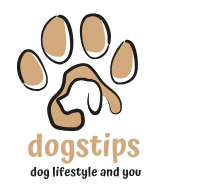Did you know crossbreeds with high-energy parent breeds require 30% more daily activity than the average dog? This lively hybrid, born from two athletic lineages, thrives when owners understand its unique needs. Whether you’re a first-time pet parent or a seasoned enthusiast, this guide unlocks everything you need to raise a happy, healthy companion.
You’ll discover how to navigate this crossbreed’s distinctive traits, from its muscular build to its fiercely loyal nature. We’ll break down practical strategies for training, grooming, and nutrition while addressing common health considerations. Our advice combines decades of canine care expertise with insights from veterinary professionals.
By the end, you’ll feel confident creating exercise routines that channel their natural enthusiasm and designing meal plans that support their active lifestyle. Let’s explore how to build a fulfilling life together with your devoted four-legged friend.
A Deep Dive into the History and Heritage
Understanding this crossbreed begins with exploring its ancestors’ contrasting legacies. One lineage traces back to 19th-century Germany, where muscular working dogs assisted soldiers and hunters. The other emerged from early American breeding programs focused on strength and tenacity.
Origins of Boxers and Pit Bulls
The German breed descended from Bullenbeissers, large mastiff-type dogs used for boar hunting. These canines later became military messengers during World War I. Across the Atlantic, bulldog-terrier crosses gained popularity for livestock handling before being misused in blood sports. Both parent breeds were valued for courage, but their purposes diverged sharply.
Evolution of the Crossbreed
Modern mixes combine traits from these distinct backgrounds. Early breeders sought to merge the German dog’s loyalty with the American breed’s athleticism. While not officially recognized by major kennel clubs, intentional crossbreeding since the 1990s has refined their predictable features. Today’s hybrids often showcase the broad chest of one parent and the short coat of the other.
Recognizing Distinctive Physical Features
What makes this crossbreed stand out in a crowd? Their athletic build and signature features offer clear clues. A short, smooth coat lies flat against their muscular frame, requiring minimal upkeep but regular brushing to reduce shedding. This low-maintenance fur often comes in shades like brindle, fawn, or white with distinctive markings.
Look for expressive eyes framed by either folded or semi-pricked ears. The ear shape often reveals their lineage—slightly drooping hints at one parent breed, while upright folds suggest the other. Their broad skull and strong jawline create an alert, confident expression that mirrors their energetic personality.
Most adults reach 21-25 inches tall at the shoulder, weighing 50-80 pounds. Males typically have a stockier build, while females may appear more streamlined. Genetics play a role—some inherit a more squared muzzle, others a slightly tapered look. These variations don’t affect health but influence their unique appearance.
Identifying these traits helps tailor care routines. The short coat needs weekly brushing, while ear shape determines cleaning frequency. Knowing their typical weight range aids in spotting early signs of joint stress or obesity during vet visits.
Understanding the boxer/american pit bull terrier mix Traits
Ever wonder what shapes the personality of a powerful yet affectionate companion? This crossbreed inherits a fascinating blend of qualities from its lineage. Loyalty shines through as a defining trait, paired with sharp intelligence that makes training rewarding. Owners often report their pets display playful enthusiasm well into adulthood.
Physical features directly influence temperament. A muscular build from one parent supports high-energy antics, while a short coat from the other requires minimal grooming. These genetic ingredients create a dog that thrives on activity but stays low-maintenance in daily care.
Behavioral patterns reveal both breeds’ influences. Protective instincts from one side balance with people-oriented warmth from the other. Early socialization helps channel natural curiosity into positive interactions. Structured routines work best for this alert, responsive hybrid.
Recognizing these inherited traits helps owners build trust. Puzzle toys engage their problem-solving skills, while agility exercises satisfy athletic needs. Consistent leadership fosters the calm confidence these dogs naturally possess.
Assessing Temperament and Energy Levels
This dynamic canine’s personality combines heartwarming devotion with boundless enthusiasm. Owners often describe their pets as velcro dogs – constantly seeking physical closeness while maintaining vigilant awareness of their surroundings. Striking this balance requires understanding inherited behavioral patterns and proactive management.
Affectionate and Loyal Nature
Deep bonds form quickly with family members, often showing through constant companionship and gentle nudges for attention. These dogs thrive on structured routines where they feel included in daily activities. Expect enthusiastic greetings and a preference for sleeping near their favorite humans.
High Energy and Protective Instincts
Bursts of playfulness demand at least 60-90 minutes of vigorous exercise daily. Without proper outlets, pent-up energy may manifest as chewing or digging. Early socialization helps distinguish normal vigilance from excessive wariness around strangers.
Key indicators of balanced temperament include relaxed body language during walks and calm responses to doorbells. For insights into managing similar gray Pitbull traits, focus on consistent training methods. Always make sure interactive toys and scent games supplement physical workouts to engage their sharp minds.
Effective Training Methods
Unlocking your dog’s full potential starts with training methods that respect their unique learning style. This energetic crossbreed thrives when sessions combine mental challenges with physical activity, creating engagement that lasts beyond basic commands.
Positive Reinforcement Techniques
Reward-based approaches yield the best results with this intelligent breed. Use high-value treats or praise immediately after desired behaviors like sitting calmly or releasing toys. Clicker training works exceptionally well—the distinct sound marks exact moments they succeed.
Try advanced exercises like agility courses or scent detection games. These activities channel their athleticism while reinforcing obedience. For structured guidance, explore our expert dog training advice tailored to strong, spirited breeds.
Handling Stubborn Moments
When your pet resists commands, stay calm and redirect their focus. If they ignore “come,” use an excited tone while backing away to spark curiosity. For leash-pulling, stop walking until tension eases—then reward loose-leash movement.
Common issues like jumping or excessive barking often stem from boredom. Address these by increasing daily enrichment rather than scolding. Freeze peanut butter in toys for distraction or initiate structured play sessions. Patience builds trust, helping your companion learn at their natural pace.
Proper Grooming and Coat Care
What’s the secret to keeping your dog’s coat gleaming and skin irritation-free? Their short, sleek fur makes maintenance simpler than many breeds. A consistent routine prevents common issues while strengthening your bond through gentle care sessions.
Bathing and Brushing Best Practices
Use a rubber curry brush weekly to remove loose hair and distribute natural oils. Baths every 6-8 weeks with oatmeal-based shampoo prevent dryness. Always rinse thoroughly—soap residue causes itching. For muddy paws, wipe with a damp cloth instead of full washes.
Maintaining a Healthy Coat
Check between toes and under folds weekly for redness or flakes. A salmon-oil supplement can boost skin hydration. Choose stainless steel combs over plastic—they glide smoothly without static. Like their blue nose Pitbull cousins, these dogs benefit from monthly nail trims to avoid posture issues.
Make sure annual vet exams include skin assessments. Professionals often spot early signs of allergies owners miss. Pair grooming with affectionate praise to create positive associations. Your effort keeps them comfortable and looking their best year-round.
Essential Exercise and Activity Routines
Managing a high-energy canine companion demands strategic planning and creativity. These athletic dogs thrive when their physical needs align with stimulating challenges. A balanced routine prevents boredom while strengthening your bond through shared activities.
Daily Walks and Playtime
Start with 45-minute brisk walks twice daily—morning and evening sessions work best. Incorporate interval training: alternate between jogging and sniffing breaks to engage body and mind. Interactive games like fetch or tug-of-war burn energy quickly. Use puzzle toys during downtime to maintain mental sharpness.
Indoor Versus Outdoor Activities
Rainy days? Create obstacle courses using furniture cushions for agility practice. Hide treats in reusable snuffle mats to mimic outdoor scavenging. For outdoor adventures, try hiking trails or enclosed fields for off-leash sprints. Always supervise play with kids, teaching gentle ball-throwing techniques.
Consistent activity reduces chewing and digging by 60% in high-drive dogs. Make sure your schedule allows time for structured play—these companions need purpose-driven engagement. Weekend family outings like beach trips or park visits turn exercise into bonding moments. Remember: tired dogs are happy dogs.
Health Concerns and Preventative Care
Proactive care dramatically impacts your companion’s quality of life. These active dogs often face genetic predispositions to joint and bone conditions, making early detection vital. Regular health screenings paired with daily observation form the foundation of effective preventative strategies.
Monitoring for Hip Dysplasia and Joint Issues
Hip dysplasia frequently appears due to genetic factors and rapid growth patterns. Watch for subtle signs like stiffness after naps or reluctance to climb stairs. Maintain lean body weight through portion control and low-impact exercises like swimming to reduce joint stress.
Veterinarians recommend glucosamine supplements for dogs showing early symptoms. Paw licking or unusual gait changes warrant immediate attention. Annual X-rays help track bone development in high-risk pets.
Regular Vet Check-Ups and Immunizations
Bi-annual exams catch hidden conditions before symptoms emerge. Core vaccines protect against parvovirus and rabies, while flea/tick preventatives guard against skin irritations. Bloodwork during visits monitors organ function and detects nutritional deficiencies.
Create a health journal noting energy shifts or appetite changes. This helps vets spot patterns indicating heart issues or allergies. Pair check-ups with dental cleanings to prevent secondary infections affecting overall wellness.
Timely intervention transforms outcomes. Schedule consultations if you notice labored breathing or persistent scratching. Your vigilance ensures years of tail-wagging adventures together.
Nutritional Guidance for Optimal Health
Fueling your active companion starts with smart nutritional choices. A balanced diet supports muscle maintenance, joint flexibility, and sustained energy levels. Focus on three pillars: premium proteins, healthy fats, and targeted supplements that address breed-specific needs.
Choosing the Right Dog Food
Prioritize formulas listing real meat as the first ingredient—chicken, beef, or salmon provide essential amino acids. Look for omega-rich fish oils and glucosamine in the ingredients list to support bone density. Avoid fillers like corn syrup or artificial preservatives that offer empty calories.
Active dogs thrive on foods containing 18-25% protein content. Check for AAFCO certification ensuring complete nutritional profiles. Rotate between kibble and wet food to maintain interest while meeting hydration needs.
Dietary Supplements and Ingredients to Look For
Add fish oil capsules or flaxseed to meals for coat health and inflammation reduction. Joint supplements with chondroitin and MSM help prevent mobility issues in athletic breeds. Probiotics aid digestion, especially when introducing new foods.
Measure portions carefully using a standardized cup—overfeeding leads to weight strain on developing bones. Adjust quantities based on activity spikes or seasonal changes. Treats shouldn’t exceed 10% of daily calories to maintain ideal body condition.
Consult your vet before adding new supplements. Pair quality nutrition with regular health screenings to catch deficiencies early. A well-planned diet becomes your dog’s foundation for vibrant energy and lifelong wellness.
Understanding Allergies and Skin Sensitivities
Is your loyal companion constantly scratching or shaking their head? Many active dogs develop skin issues requiring careful attention. Common triggers include food proteins like chicken or beef, environmental pollen, and household cleaning products. Early detection prevents minor irritations from becoming chronic conditions.
Watch for red patches between toes, recurring ear infections, or excessive licking. These signs often point to sensitivities. Paws may collect allergens during walks, while folded ears trap moisture that breeds yeast. Weekly checks help spot problems before they escalate.
Choose fragrance-free shampoos and hypoallergenic wipes for routine care. For ear maintenance, use vet-approved cleaners monthly. Wipe outer folds with cotton balls—never insert tools deep into canals. Dietary changes sometimes resolve itching; try limited-ingredient foods under veterinary guidance.
Persistent symptoms demand professional evaluation. Vets perform skin scrapings or blood tests to identify specific triggers. They might recommend allergy shots or medicated baths for severe cases. Track flare-ups in a notebook, noting seasonal patterns or new exposures.
Proactive owners reduce discomfort through simple habits. Vacuum frequently to minimize dust mites. Rinse your pet’s coat after park visits. Remember: consistent care keeps their skin healthy and strengthens your bond through gentle touch.
Socialization Strategies for a Well-Adjusted Dog
Building a confident companion starts with smart socialization techniques. Early exposure to diverse environments and positive interactions shapes lifelong behavior patterns. For energetic breeds, structured socialization reduces anxiety and prevents reactive tendencies.
Introducing Your Dog to Other Pets
Begin introductions in neutral spaces like parks or quiet streets. Keep initial meetings short, using leashes for control. Reward calm behavior with treats when pets sniff politely without lunging.
Gradually increase exposure time over weeks. If growling occurs, redirect attention with a toy or command. Always separate animals before tension escalates, then try again later.
Best Practices for Child Interaction
Teach kids to approach slowly with palms facing down. Supervise all interactions, especially with young children. Practice “gentle petting” exercises where kids stroke the dog’s back while owners offer praise.
Create structured play sessions using fetch or hide-and-seek. These activities channel energy positively while reinforcing boundaries. If excitement builds, initiate a calm-down routine with sit-stay commands.
Consistency transforms challenging moments into learning opportunities. Pair new experiences with favorite treats to build positive associations. Over time, these strategies help create a relaxed, friendly pet that thrives in family settings.
Advice for First-Time Dog Owners
Welcoming a new furry family member brings excitement and responsibility. These loyal, energetic companions thrive with owners who understand their unique needs. Start by establishing consistent routines—scheduled feedings, exercise sessions, and quiet time help create stability.
High energy levels demand creative solutions. Plan 90-minute activity blocks split between walks, play, and training. Interactive toys prevent boredom during downtime. Puppies require extra patience—their curiosity often leads to chewing or jumping behaviors needing gentle correction.
Research breeders thoroughly. Ask for health clearances on hip dysplasia and heart conditions. Reputable providers share lineage details and offer post-adoption support. For those considering adorable companions, prioritize early socialization to build confidence around strangers and animals.
Age impacts care strategies. Younger dogs need frequent short training sessions, while adults benefit from advanced obedience drills. Make sure your lifestyle matches their stamina—these mixes flourish in active homes. With commitment and love, you’ll gain a devoted partner for life’s adventures.
Choosing a Quality Breeder or Adoption Resource
Finding your perfect canine companion begins with responsible sourcing. Ethical breeders and reputable shelters prioritize health and temperament over profit. You’ll want partners who demonstrate genuine care for the animals’ lifelong wellbeing.
Important Questions to Ask
Always request proof of health screenings for both parents. Reputable sources provide documentation for hip evaluations and genetic tests. Ask about early socialization practices and vaccination schedules.
Inquire how long they’ve worked with the breed. Seasoned professionals explain lineage details and potential health considerations. Request to meet at least one parent to observe temperament traits firsthand.
Identifying Red Flags
Walk away from facilities that refuse home visits or lack kennel club affiliations. Puppies raised in cramped spaces often develop behavioral issues. Be wary of breeders who pressure quick purchases or avoid discussing genetic conditions.
Check for clean environments with adequate space. Responsible providers ask you questions too—they care where their dogs go. Make sure contracts include health guarantees and return policies.
Trustworthy sources educate buyers about training needs and breed characteristics. They’ll stay available for guidance long after adoption. Your diligence ensures a healthy start for your new family member.
Grooming Tools and Recommended Products
What separates adequate grooming from exceptional coat care? The right tools and formulas make all the difference for short-haired breeds. Smart selections prevent skin irritation while enhancing natural shine and comfort.
Top Tools for Effective Grooming
Start with a rubber curry brush like Hertzko’s deshedding tool. Its gentle bristles remove loose hair without scratching sensitive skin. Pair it with a stainless steel comb for precision work around ears and paws.
Nail maintenance requires sharp trimmers—look for scissor-style designs with safety guards. Veterinarians often recommend Millers Forge clippers for their ergonomic grip. Finish with a silicone grooming mitt to distribute natural oils during baths.
Product Recommendations from Experts
Burt’s Bees oatmeal shampoo soothes dry skin with colloidal oat flour. For deep conditioning, Earthbath’s aloe vera spray adds moisture between washes. Avoid alcohol-based products; they strip protective oils from short coats.
Active breeds benefit from paw balms containing beeswax and coconut oil. Brands like Musher’s Secret protect pads during outdoor adventures. Always check labels for plant-based ingredients and pH-balanced formulas.
Customize routines based on your pet’s needs. Mixes with thicker coats may need weekly brushing, while others thrive with bi-monthly sessions. Consistent grooming strengthens your bond and catches health issues early.
Keeping Your Pet Safe and Secure
A safe environment forms the foundation of your dog’s well-being. Proper precautions prevent accidents while supporting their natural curiosity. Let’s explore strategies to protect your companion indoors and outdoors.
Safety Tips for Walks and Outdoor Adventures
Use a no-pull harness during walks to reduce neck strain. Reflective gear improves visibility for evening strolls. Watch for signs like excessive panting or lagging—these indicate overheating or fatigue.
Always carry water and avoid hot pavement. Train a solid “leave it” command to prevent scavenging. Secure fencing prevents escapes during backyard play. Rotate toys to maintain engagement during outdoor sessions.
Creating a Pet-Friendly Home Environment
Remove toxic plants like lilies and secure trash cans with childproof locks. Designate a chew zone with durable toys to satisfy natural urges. Non-slip mats near food bowls support joint health for active dogs.
Install window screens to prevent falls from high-energy jumps. Use bitter apple spray on furniture legs if chewing occurs. Regular safety checks identify hazards like loose wires or small choking risks.
Proactive measures reduce stress and prevent common conditions. Pair physical safeguards with mental stimulation for balanced health. Your vigilance creates a sanctuary where your dog thrives confidently.
Wrapping Up Your Ultimate Guide
Your journey with this loyal companion thrives on knowledge and consistency. From understanding their heritage to mastering daily care routines, you now hold the tools to nurture a thriving partnership. Prioritize structured training, portion-controlled meals, and regular health screenings to maintain their zest for life.
Today marks the perfect time to implement these strategies. Monitor weight through activity logs and vet consultations. Engage kids in safe play sessions that reinforce boundaries while building trust. Remember: a well-exercised dog with proper socialization becomes a cherished family member.
Watch for subtle signs like changes in appetite or energy levels—they often reveal deeper needs. Pair outdoor adventures with mental challenges to satisfy their athletic nature. Every grooming session and training moment strengthens your bond.
By applying this guide’s insights, you’ll create a fulfilling routine tailored to your pet’s unique spirit. Stay observant, stay proactive, and enjoy the rewards of raising a happy, healthy companion.
FAQ
Are these dogs prone to hip dysplasia?
Yes, this crossbreed can inherit joint issues like hip dysplasia. Maintain a healthy weight with portion control and low-impact exercises like swimming. Ask your vet about glucosamine supplements for joint support.
How do I manage skin allergies in my dog?
Use hypoallergenic shampoos like Vet’s Best or Earthbath, and incorporate omega-3 fatty acids into their diet. Regularly check for redness or itching, and consult your vet if symptoms persist—they may recommend allergy testing.
What’s the best training approach for stubborn behavior?
Stay consistent with reward-based methods using treats or praise. Redirect unwanted behaviors with toys or commands, and avoid harsh corrections. Enrolling in AKC-approved training classes can reinforce positive habits.










Leave a Comment